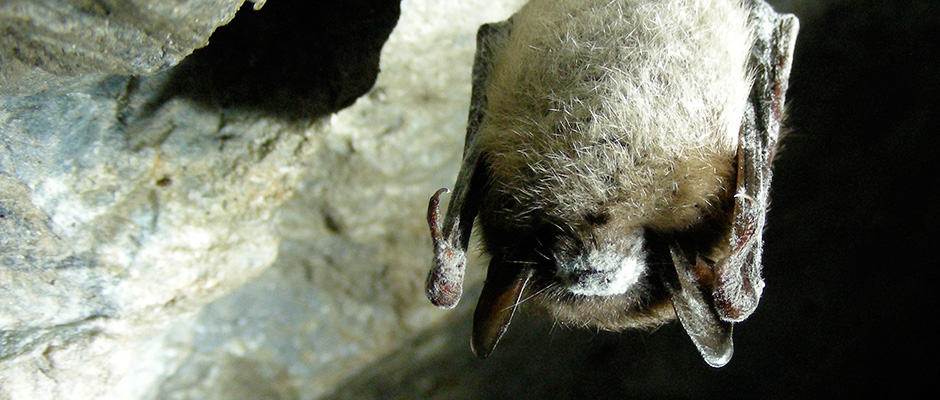Share this article
Enzyme in Bat Fungus Damages Tissue: Study
Scientists have unearthed a new clue to help explain white-nose syndrome — an emerging disease that has caused 6 million bat deaths in North America in less than a decade.
In a recently published study, researchers discovered a particular enzyme secreted by the fungus Pseudogymnoascus destructans, which causes white-nose syndrome, is capable of causing much of the damage to collagen in bats.
“We looked to see what enzymes were secreted by fungal cells,” said Richard Bennett, an associate professor at Brown University and one of the corresponding authors of the study published in the Proceedings of the National Academy of Sciences. “We completed an analysis using mass spectrometry and found a number of interesting proteins including proteases.” Mass spectrometry is an analytical chemistry technique used to identify the amount and type of proteins in a sample.
Proteases are enzymes that break down proteins and peptides, and Bennett and his team found that one particular protease, which they named “Destructin-1,” degrades connective tissue.
The next step was to identify potent protease inhibitors that could slow the degradation of connective tissue by Destructin-1, according to Bennett. They identified chymostatin — a potent protease inhibitor that could lessen the activity of Destructin-1. When the team added chymostatin to collagen being degraded by P. destructans enzymes they saw positive results: There was a 77 percent reduction in collagen damage after 54 hours when compared to treatment without chymostatin.
While the team hasn’t yet tested the inhibitor on live bats, Bennett hopes to get funding for research that will show the inhibitor’s success. “We’re looking to test the inhibitors in experimental bats,” he said. “If we give it to them either by spraying it on them or using any other delivery, we want to see if we could block the protease.”
Another paper published about a month before Bennett’s also identified the same protease, however, it didn’t examine the effect on collagen, but rather looked at which proteases are highly secreted.
Findings such as these could have important conservation implications, Bennett said.
“Potentially, this could restrict the progression of the disease,” he said. “It’s very invasive. In images of bat infections, you can see how it really gets deep into their tissue, including their wings. If we could block how it invades into the tissues, this damage could be limited.”
Header Image:
A little brown bat (Myotis lucifugus) is affected by white nose syndrome. Researchers discovered a particular enzyme that is likely causing most of the collagen damage in bats infected with the white-nose syndrome fungus Pseudogymnoascus destructans.
Image Credit: Marvin Moriarty, USFWS








